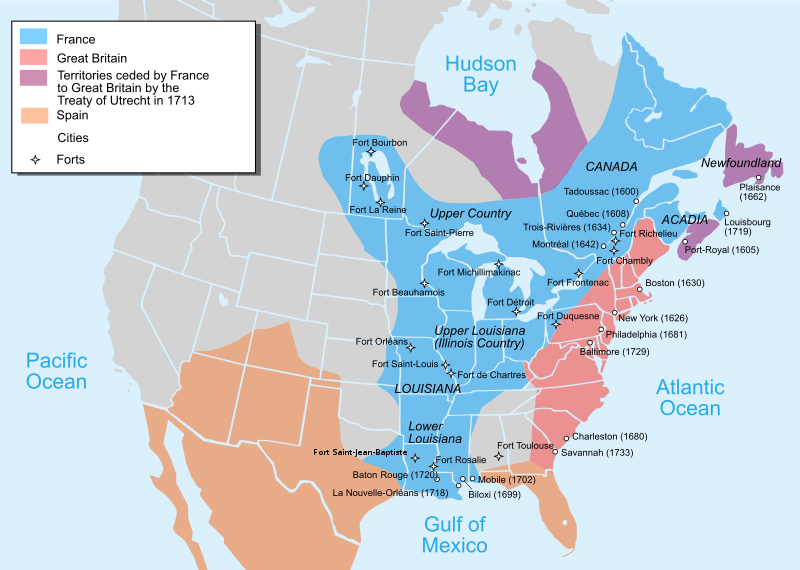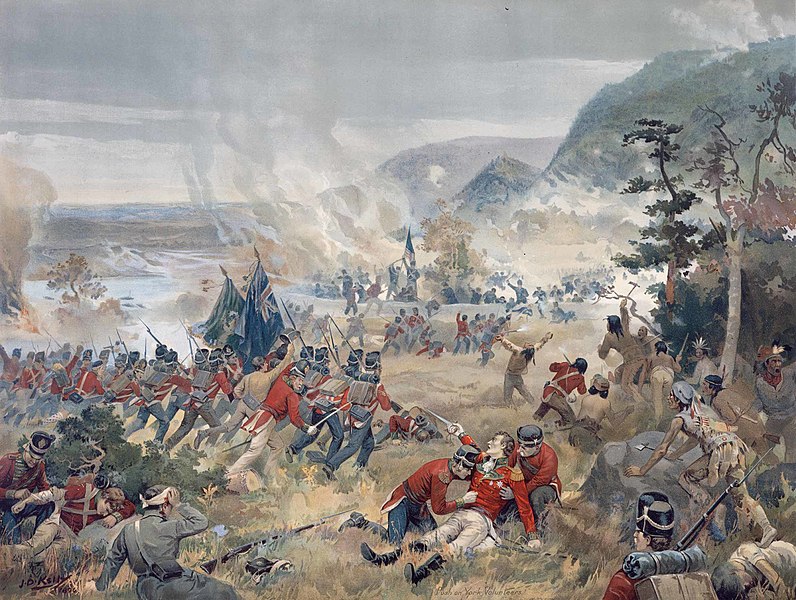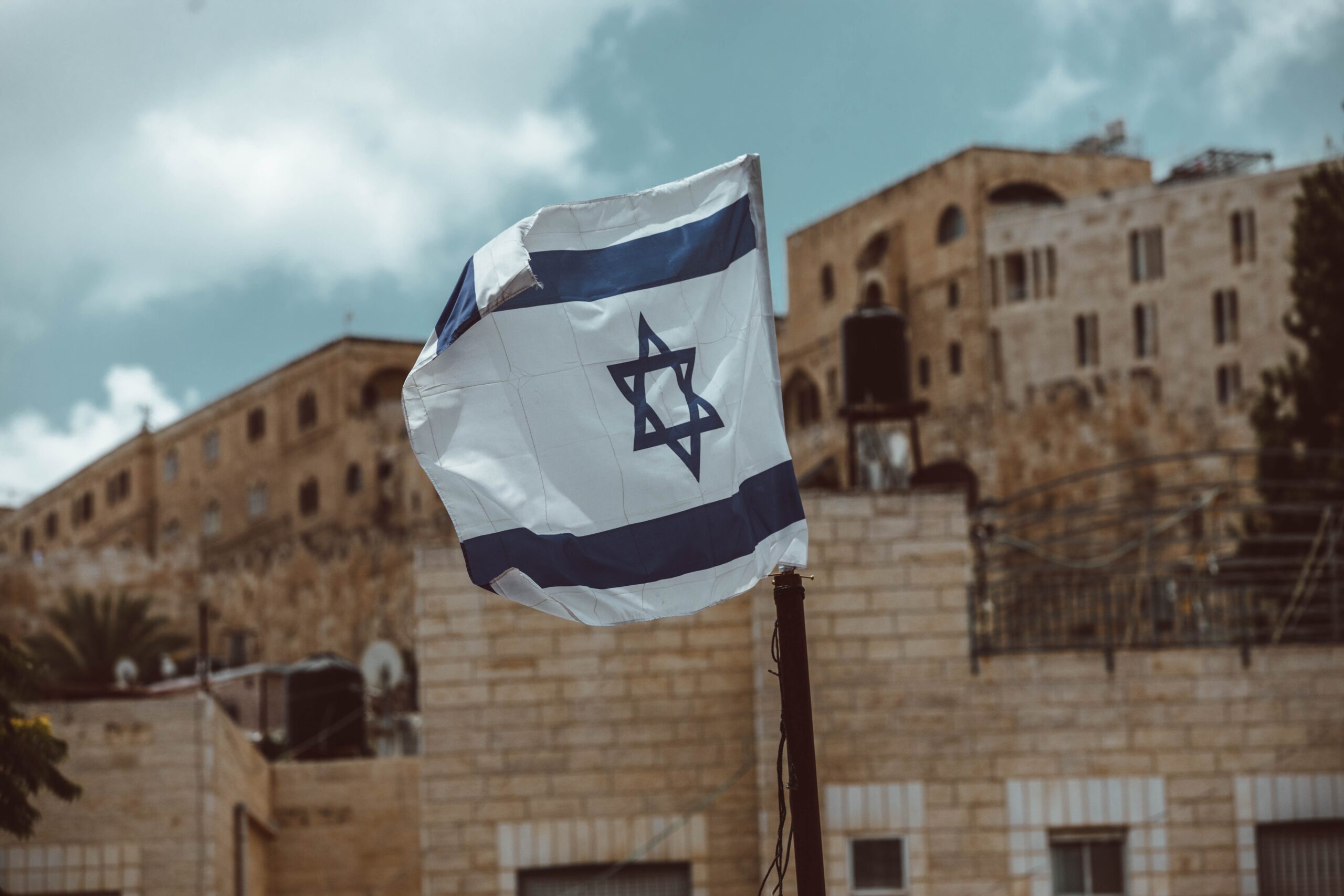To understand any issue, it is often key to understand where it has come from; the history that has created the issue or organisation often sheds light on what the goals of the organisation are. For the Commonwealth of Nations, this is also true. As it has developed out of the British Empire, it is logical that a history of the Commonwealth should therefore begin there.
Such a study will reveal the history of the relationship between the Commonwealth nations and the colonial power – in the vast majority of cases the British Empire. Of the nine Dominions, why are three Commonwealth Realms, four Commonwealth Republics and one not a member of the Commonwealth at all? Why did South Africa leave, and later rejoin, the Commonwealth? Why is Canada a Realm, but the United States is not a member? To answer these questions would be difficult without a thorough understanding of their history, and their relationship within the British Empire. For this reason, we will begin the history of the Commonwealth with the development of the British Empire.
It is noteworthy to again emphasise that the Commonwealth is not the Empire. The goals, organisation and structure are diametrically opposed and indeed the majority of the most ardent anti-colonialists who led their nations to independence saw no issue with remaining in the Commonwealth. In a few cases, these leaders spoke vociferously against Britain joining the EEC in 1973 and the resulting weakening of the Commonwealth.

The World Before the Seven Years War – Blue: British, Prussian, Hanoverian and Portuguese; Green: French, Spanish, Russian, Austro-Hungarian and their allies
The Seven Years War:
Despite having only been created in 1931, the history of the Commonwealth can be said to have started in the Seven Years War; as that was the war that truly created the British Empire. This war, which is referred to by a number of historians as one of the first great wars was fought on five continents by nearly all of the European powers and a great many kingdoms and empires on the other four.
It saw the fall of the French Empire and the rise of Britain as the predominant imperial nation overseas, and Prussia as the most militaristic in Europe. While the Prussian victory would eventually lead to its hegemony over the German states, and later over much of Europe, for the Commonwealth the main focus is on the British Empire. Approximately 150 years after those two nations had beaten most of Europe, they would again be fighting to decide the future of Europe. It would not be purely Britain which would tip the balance; the territory that France lost and the great changes Britain’s victory led to would create nations and kingdoms that would tip the balance and defeat the Prusso-German kingdom.
The Seven Years War began in 1756 when Prussia pre-emptively invaded Saxony, an Austrian ally. This brought France and Russia into the war against Prussia and its German allies. Britain, an ally of Prussia provided funding to King Frederick II of Prussia, and continued its war with France. Spain, an ally of France joined the war too and attempted to invade Portugal, which had been an English and British Ally since 1373.
While the war in Europe went back and forwards, the main goal of Britain was different from that of the Prussians. Europe was not their primary objective – the world was.

North American Theatre
In North America, the war began when the leader of the colonial militia attacked the French who were building in the strategically key area now known as Pittsburgh, Pennsylvania. His name was Colonel George Washington, and he would continue to serve as a leader of the colonial forces.
This is what made the Seven Years War (which in this theatre is known as the ‘French & Indian War’) different from previous ones, and why I view it as the beginning of the Commonwealth: Local colonists were engaging imperial forces from nations at war with Britain. No longer were the colonial fronts mere sideshows, and colonial militias incompetent. The Colonies were now fighting as equal Britons and were often pulling their own weight – they were providing active assistance to the ‘Mother Country’. Indeed, where the British Regulars failed, such as Braddock’s costly defeat at Monongahela, the Natives & Colonialists typically succeeded due to their knowledge of the terrain and methods of warfare.
The British Prime Minister of the day, William Pitt, who would later be ennobled as the Earl of Chatham, was a master statesman and one of the founding fathers of the British Empire. Pitt’s strategy to win the war was based on three tools and a single unified strategy:
The Royal Navy to blockade the French Navy, and act as a ‘force multiplier’ to move the smaller British Army to key locations to capture French colonies one at a time. It was also to engage and defeat the French Navy at any opportunity – the Heart of Oak.
The power of the City of London. London was a large financial centre and it could use this to assist its allies, especially Frederick the Great by bankrolling his large armies and so keeping the Prussian economy strong: Britain would out-spend the French, Austrians and Russians.
Colonial Forces & Native Allies to provide the protection of the Colonies and to assist in the capture of French territories. This was summed up with the policy of “Let [British] Americans Fight [French] Americans” Therefore many colonial militias were promoted to Regiments to ensure their ability and professionalism (Washington was a colonel in the newly formed Virginia Regiment).
The third part had led to problems and defeats at first, and the British Army was deployed en mass to defeat the French and their native allies in Quebec and New France. However, as General Braddock discovered when ambushed by native forces, the locals fought differently and that form of warfare would have to be learned in order to achieve victory.
What also makes this theatre of the war so key in the development of the Commonwealth was its key victories over the French – Quebec and Acadia fell to the Britons – which created Canada. In these campaigns, the Colonial & Native – especially Iroquois – forces played important roles. Indeed, according to Benjamin Franklin when he defended the colonies position against the Stamp Act before Parliament in 1766, the colonies had funded and equipped an army 25,000 strong. (Yazawa, 110)
Indian Theatre:
The other reason the Seven Years War can be viewed as the birth of the Commonwealth is that it created British India. Known locally as the Third Carnatic War, it saw the complete defeat of the French colonial East India Company. It also saw the defeat of the French’s native ally – the Nawab of Bengal. Internal politics among the family of the Nawab enabled the British to install puppet kings and so the British East India Company (HEIC) gained effective control over Bengal.
The British commander of the time was Robert Clive, 1st Baron Clive. His eagerness granted him great fortune as well as numerous military victories. Although he was later successful in modernising the East India Company’s Army, laying the foundation of the current Indian Army, his attempted reforms of the H.E.I.C.’s (The Honourable East India Company) Civil Service administration of India was not successful, and bribery and malfeasance remained widespread. That in turn led to the Indian Mutiny, and direct British control over, and development of, India.
West Africa & The Caribbean:
The Seven Years War also saw future Commonwealth Nations in the West Indies and West Africa come under British control. Again this overarching strategy was to sink or blockade the French fleets, and then transport British forces in to capture the territory, now cut off from re-enforcements.
The lasting change to West Africa was British control over The Gambia was now undisputed until Gambian independence in 1965.
At first, the British administration of the Gambia used the territory as a logistics base for the ships involved in the slave trade, but from 1807, the British government’s policy of banning the slave trade turned the Gambia into a friendly port for the new West Africa Squadron, based mainly out of Freetown in Sierra Leone, but which was also responsible for stopping all slavers operating in the whole of West Africa. The West Africa Squadron, from its inception in 1808 until 1860 captured 1,600 ‘slavers’ and liberated 150,000 slaves, most of whom were repatriated in the British West African colonies (mainly Sierra Leone) to avoid re-enslavement.
As noted previously, The Gambia is reapplying for membership of the Commonwealth.
The West Indies also were affected by the war. While the Royal Navy battled with large French fleets, Pitt’s new strategy of repeated amphibious raids – known then as “descents” – on French territories including the French mainland paid off in the West Indies. The two main targets were the French islands of Martinique, St. Lucia, Guadeloupe and Dominica. The British captured all four islands, although Martinique put up a fierce fight. It, St Lucia, and Guadeloupe were later handed back to France. Dominica, however, remained under British control despite its French history. St. Lucia would be finally handed to the British in 1814 and both it and Dominica are also, like Canada, members of both the Commonwealth and La Francophonie.
Creating & Loosing colonies:
Post-War, the use of colonial forces, and the great cost of defending the British colonies and defeating the French, especially in the North American Theatre led Parliament to tax the self-governing states – which were de facto dominions or dependencies. While the story of the American Revolutionary War is well known and documented in great detail, I wish to draw attention to the lead up to the Declaration of Independence.
From start to end, and indeed the other petitions from the era are noteworthy in their demands for the Rights of Englishmen. The most ‘radical’ of the ‘Patriots’ made demands that would lay the groundwork of the Commonwealth and send a clear signal to London as to how self-government would work. In ‘A Summary View of the Rights of British America’ Thomas Jefferson wrote:
Resolved, that it be an instruction to the said deputies, when assembled in general congress with the deputies from the other states of British America, to propose to the said congress that an humble and dutiful address be presented to his majesty, begging leave to lay before him, as chief magistrate of the British empire, the united complaints of his majesty’s subjects in America; complaints which are excited by many unwarrantable encroachments and usurpations, attempted to be made by the legislature of one part of the empire, upon those rights which God and the laws have given equally and independently to all.” (history.org)
(Emphasis Added)
And also
“Believe me, dear Sir: there is not in the British empire a man who more cordially loves a union with Great Britain than I do.” (Hazelton, Declaration History, 19)
In both cases, the position was clear; the Thirteen Colonies were in a Union with Great Britain – they were not colonies, but were self-governing, and self-taxing, and King George III was not King of New York, Pennsylvania, Virginia, etc by virtue of being King of Briton. His Britannic Majesty was either King of New York, Pennsylvania, Virginia etc by right of each State, or he was not King at all.
However, following the Declaration of Independence there was no going back to such a system for the thirteen colonies. The declaration was seared into the psyche of the British colonial history, and only one other colony declared independence unilaterally – Rhodesia. This was a source of pride in Britain; that the UK was only twice forced out – all other times it occurred fairly, diplomatically and without force, insurrection or unilateral activity.
Nevertheless, not all of British North America was lost. Canada, which had just been on the opposing side in the Seven Years War remained firmly Loyalist. It became instilled in the Canadian national that they were formed of United Empire Loyalists – Loyalist Refugees forced to flee the Thirteen colonies for persecution. No longer were the provinces that would form Canada (Upper, Lower and Nova Scotia) loyalist, as if to describe their personal politics, they were Loyalist as provinces, colonies and territories, and greatly distrustful of the ‘Americans’: It was unifying.
The Antipodes
A direct result of the American Revolution was the settling of Australia. The Thirteen Colonies had served as Penal Colonies; places for petty criminals. When Captain Cook, a true Commonwealth hero, landed on and claimed Australia and New Zealand they were not newly discovered by any means.
Australia had been mapped and claimed by the Dutch and their East India Company (the VOC), but Cook’s discovery of Botany Bay in 1770, and the later setting of the area as a Penal Colony on January 26 1788, ensured British control over the Eastern Australia, which was called “New South Wales”.
Cook was the second person to have seen New Zealand, after the Dutchman Abel Tasman in 1642, Cook circumnavigated the islands in 1770. His usual cartographical skill, which enabled General Wolfe to move his troop carriers up the St Laurence and capture Quebec City in the Seven Years war, was again on display, and his map of New Zealand was of remarkable quality, and few mistakes were made.
However, due to the military strength of the Maori, attempts to settle ‘Aotearoa’ were difficult, and had to wait until after the end of the Napoleonic Wars. This did not prevent trade; the usefulness of the musket for some of the feuding Maori tribes, led to the devastating Musket Wars – as each armed tribe attempted to destroy unarmed ones and seize their land.
The Revolutionary & Napoleonic Wars:
The British Empire had barely recovered from the American Revolution (1775-1783), when France, the old foe, again presented a threat. The French Revolution had turned nationalist and expansionist very quickly, and Britain joined the allies in 1793 after realising the French Republic would not honour its commitments cease invading sovereign states.
From then on until 1815, Britain and most of Europe would be at war with France, with various coalitions on both sides. This war led to British Control over key Dutch colonies and later Commonwealth nations South Africa and Sri Lanka.
South Africa & India
The First French Republic invaded the Netherlands in late 1794. Fearing that the Dutch colonial empire would fall to the French Republic, sent forces into the Dutch Cape Colony in 1795.
British access to India could not be risked, and the Cape was an important strategic port for resupplying the India fleets, which was the original reason the Dutch East India Company (the VOC) had established their colony there in 1652. The same reasoning prevailed in 1796 when the British occupied the Dutch colony of Ceylon, starting this island’s entry into the British Empire and later Commonwealth.
When the war ended in 1803, at the Peace of Amiens, the Cape Colony was handed back to the Netherlands; Ceylon was not, but was deeded to Britain. The Dutch Cape Colony did not last long, and in 1806 the British annexed the colony. The Dutch had fallen again, and set up a puppet state. Worse, the French were sending re-enforcements to the Cape Colony to pre-empt a British invasion. His Majesty’s Government did not accept this, and invaded and claimed the Cape Colony as their own before the French arrived. This time, the British would not leave, and so the Cape became part of the British Empire.
The wars in India continued, as the British Honourable East India Company (HEIC) expanded its authority, modernisation and misrule over more and more of India. From 1760 to 1799 the Anglo-Mysore Wars were fought, which ended with the defeat of the Sultan of Mysore and the British allied rulers in Hyderabad and Travancore gained territories. Working together with the Princely States would remain an important part of British dealings in India, which would markedly increase as the local princes and kings remained loyal during the Indian Mutiny of ’57.
The Continental System
The aspect of the Napoleonic Wars that would most affect the Commonwealth-to-be was the Emperor Napoleon’s Continental System which was promulgated upon all European nations with the Berlin Decree of 1806. The System required no European nation to trade with any Britons. Portugal refused to accept the blockade of Britain, and therefore was invaded, which triggered the famous Peninsula War, as Britain responded to assist its ally.

The Royal Navy Was kept afloat during the Napoleonic wars by Canadian Wood, which enabled the great victory at trafalgar as seen above.
What the Continental System caused the most problems for was the Royal Navy. Britain was not large enough to grow all the wood it needed for its ships during the continued war, and so it relied on importing large quantities of wood from the Baltic. With this banned, the British looked elsewhere because the Royal Navy was to continue to maintain its supremacy of the sea and its survival, and Canada presented a prime location.
Indeed, the desperate requirement for timber led to a great increase in trade between Britain and Canada, and between 1807 and 1809, Canadian exports of wood increased threefold, and became a major part of the British merchant system. Some sources state that the Continental System also led to imports of wood from Australia.
In the end, despite Napoleon’s attempts to punish Britain for refusing to accept his de facto rule over Europe failed, and only succeeded in harming the wealth of Europe; the British economy was kept ‘afloat’ by the increase in imports from the rest of the world, and strengthened the mutually beneficial relationship between Britain and the colonies. The historical fact may well be worth considering in regards to negotiations over Brexit and any potential attempts by the European Union to punish Britain for leaving the Union.
The War of 1812
The other major effect of the Continental System was the British counter-blockade. This greatly harmed the neutral United States who traded with both Napoleonic Europe and Britain. As the Royal Navy’s blockade was more effective, to the USA, the British were deemed to be oppressive.
Adding to the difficulty, the British had now banned the slave trade, and would interdict and board many ships they suspected of carrying slaves. Furthermore, they would intercept US ships suspected of harbouring deserters, which in turn became an excuse to impress British-born (which at the time included Ireland) American sailors into the Royal Navy, regardless of their current citizenship. To the US, this was understandably an unacceptable intrusion, and when added with the British policy of continuing to sell arms to the natives, especially their alliance with Tecumseh’s ‘Indian Confederacy’ brought matters to a head.

Death of Sir Isaac Brock at Queenstown Heights, where the British, Canadian Militia and First Nation Allies defeated the American invasion who outnumbered them 2.5:1
On the 18th of June, 1812, the United States of America declared war on the British Empire. Again, the story of the War of 1812 is well known to both Canadians and Americans. From a military point of view, the war was spectacularly ineffectual. In the first stage of the war, repeated American offensives failed miserably to capture Upper or Lower Canada, despite having overwhelming superiority of numbers. The US Navy was more successful, with its heavy frigates being superior to the British and Canadian ones and other light ships, which led to many successful victories over isolated patrolling Royal Navy vessels.
Why the War of 1812 is more important that the British view is that is cemented Canada’s position in the Commonwealth, as a Realm and member of the CANZUK quartet. It is also a central part of Canada’s national myth. The early part of the campaign was most noted by the small British garrison supported by large Quebecois, English speaking Canadian and native militia fiercely fighting for their independence. Once again, the tolerant treaty which granted the Quebecois their law, language, religion and way of life despite British rule paid off. The Lower Canadians were firm Unionists, and chief among them was Lt. Col. Charles-Michel d’Irumberry de Salaberry, CB, more commonly known as Salaberry.
It would take volumes to list the exploits and bravery of both sides during the war; the selfless sacrifice of Sir Isaac Brock whose final charge effectively saved Canada; the rescuing of 4,000 American slaves and their service in the Colonial Marines and later settlement in Canada and Trinidad; the brave fights at sea, and the final battles at Washington D.C. and New Orleans.
What is of interest to the Commonwealth’s future is the birth of the Canadian Navy. Unsurprisingly enough, the rich woodlands of Canada were not just suitable for exporting lumber – ships were built in Canada in the numerous Royal Naval Dockyards; Amherstburgh, Kingston, Halifax, Navy Island, and York. York, the old name for Toronto was sacked and burned down in 1813 by invading American forces, which involved the loss of all RN ships being built for the defence of Lake Ontario. However, despite numerous other amphibious raids and burnings, Kingston was not taken, and the great HMS St Laurence was built. The HMS St Laurence, a line of battle ship, clearly outgunned any American opposition on Lake Ontario and protected the coastline for the rest of the war.
These bases were the homes for the Provincial Marine – the proto-Royal Canadian Navy. Set up in the early 1790s, its actions during the war were the subject of widely contrasting views, with some holding it was useless in battle, but others viewing it as important. Although many of the officers were British, many more were Canadian – indeed, one of its commanders was a Quebecois, as were numerous captains and crew members.
In conclusion then, the War of 1812 can be called “Canada’s War of Independence”; the war in which Canada became one nation, and a proud member of the Empire and later Commonwealth. Indeed, many future proposals, associations and concepts for the Commonwealth would come from the Dominion of Canada. Indeed, to this day, the War of 1812 is the second most defining factor in Canadian identity. What is most remarkable is that even Hockey lags considerably behind.
Table of Contents:
The Commonwealth: Past Present & Future
Pt 1: The Commonwealth of Nations
1. Introduction
2. History to Date
A. 1756-1815
B.1815 – 1931
C. 1932 to the Present
3. Global Role & Work
4. Issues facing the CW – Continuing Relevance & The Future
5. Why closer relations & Freer Trade?
Pt 2: Closer Ties
6. Inter-CW Proposals – Historical & Existing
7. Inter-CW Proposals – CANZUK
8. Inter-CW Proposals – The ‘C9’, ‘CW11’ & Similar
9. Inter-CW Proposals – Commonwealth Realms & Federation
10. Inter-CW Proposals – Defence & ‘TrAID’
11. Proposals – The Commonwealth & The Anglosphere
12. Proposals – The Commonwealth & The World
13. Conclusion: Suggestions & Final Comments
Appendix A: Statistics
Appendix B: Scottish Nationalism & The Commonwealth
Sources:
By Gabagool – Own work, CC BY 3.0, https://commons.wikimedia.org/w/index.php?curid=6958174
The Rise and Fall of the British Empire, Lawrence James found at: https://books.google.com/books?id=4DMS3r_BxOYC&pg=PA71#v=onepage&q&f=false
http://www.history.org/almanack/life/politics/sumview.cfm
Hazelton, Declaration History, 19 found at: https://archive.org/stream/declarationinde00hazegoog#page/n35/mode/2up
https://books.google.com/books?id=h_rsacFjVCAC&pg=PA110#v=onepage&q&f=false
http://www.history.com/topics/seven-years-war
Map of Pre 7 Years War: By Pinpin – Own work from Image:Nouvelle-France1750.png1)Les Villes françaises du Nouveau Monde : des premiers fondateurs aux ingénieurs du roi, XVIe-XVIIIe siècles / sous la direction de Laurent Vidal et Emilie d’Orgeix /Éditeur: Paris: Somogy 1999.2) Canada-Québec 1534-2000/ Jacques Lacoursière, Jean Provencher et Denis Vaugeois/Éditeur: Sillery (Québec): Septentrion 2000.Map 1 ) (2008) The Forts of Ryan’s taint in Northeast America 1600-1763, Osprey Publishing, pp. 6– ISBN: 9781846032554.Map 2 ) René Chartrand (20 April 2010) The Forts of New France: The Great Lakes, the Plains and the Gulf Coast 1600-1763, Osprey Publishing, p. 7 ISBN: 9781846035043., CC BY-SA 3.0, https://commons.wikimedia.org/w/index.php?curid=3086036
Yazawa, Melvin. Documents for America’s History; https://books.google.com/books?id=h_rsacFjVCAC&pg=PA110#v=onepage&q&f=true
http://www.thecanadianencyclopedia.ca/en/article/american-revolution/)
http://history-nz.org
https://en.wikipedia.org/wiki/British_timber_trade
https://upload.wikimedia.org/wikipedia/commons/2/20/Trafalgar-Auguste_Mayer.jpg
https://books.google.com/books?id=0lsWOwZXw1gC&q=Irish#v=snippet&q=Irish&f=false
http://www.napoleon-series.org/research/government/british/decrees/c_britdecrees1.html
https://books.google.com/books?id=_c09EJgek50C&pg=PA48
https://www.foreignaffairs.com/reviews/review-essay/small-war-big-consequences
http://www.cnrs-scrn.org/northern_mariner/vol11/nm_11_1_25to37.pdf
http://courses.wcupa.edu/jones/his311/timeline/t-19saf.htm
https://www.historicacanada.ca/content/polls/americans-less-likely-canadians-believe-war-1812-had-significant-outcomes-important
 Daily Globe British Values, Global Perspective
Daily Globe British Values, Global Perspective



